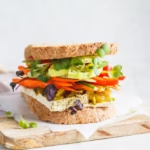With rising food prices adding pressure to household budgets, especially for Australians on lower incomes, it’s important to find ways to save money while still eating nutritious meals. Fortunately, there are several affordable, nutrient-rich foods that can help stretch your grocery budget without sacrificing health benefits. Here are five foods that should make their way onto your shopping list:
1. Eggs
Eggs are an incredibly affordable source of protein. In comparison to meat, chicken, and fish, which can be more expensive, swapping out a red meat meal for an egg-based dish can result in significant savings.
Eggs are rich in high-quality protein and contain essential vitamins and minerals, including choline, lutein, zeaxanthin, vitamins A, B2, B12, D, E, and folate, as well as iron, zinc, iodine, and selenium. For those concerned about cholesterol, recent studies suggest that eating up to one egg a day is unlikely to have a negative effect on overall health.
Recipes such as omelettes, fritters, and fried rice are great ways to incorporate eggs into your meals while using up other pantry staples, making them a versatile and cost-effective option.
2. Rolled Oats
Oats are incredibly versatile and can be used for breakfast (think porridge, overnight oats, or homemade muesli), as a pastry substitute for quiches, or even as a breadcrumb replacement for a healthier twist on your favorite dishes.
As a wholegrain, oats retain all parts of the grain, making them a rich source of fiber, particularly beta-glucan. This soluble fiber helps lower cholesterol by binding with bile acids in the gut, preventing their conversion into LDL (bad) cholesterol. Oats are also packed with B vitamins (thiamin, riboflavin, niacin, pyridoxine, pantothenic acid, and folate), vitamin E, and essential minerals such as iron, zinc, magnesium, and potassium.
3. Carrots
Carrots are another incredibly affordable food. They are versatile and have a long shelf life when stored properly in the fridge. Carrots can be enjoyed raw as snacks, grated into salads or burgers, or roasted for a sweet and savory treat. You can also blend them into soups, make carrot mash, or use them in baking recipes like carrot muffins or bliss balls.
Rich in carotenoids, particularly alpha-carotene and beta-carotene, carrots are converted into vitamin A in the body, supporting eye health, skin, immune function, and overall cellular repair. Their rich nutritional profile makes them an excellent and cost-effective addition to your diet.
4. Longlife Skim Milk
Longlife skim milk offers great value for money with the added benefit of a long shelf life, making it a convenient staple to keep in your pantry. Whether you use it for smoothies, quiche fillings, or creamy dishes like cauliflower cheese, it provides a nutrient-rich base for many meals.
Milk is a good source of protein, calcium, magnesium, zinc, potassium, and vitamins A, B2, and B12. Studies have shown that regular milk consumption is linked to a reduced risk of osteoporosis, high blood pressure, type 2 diabetes, heart disease, and colon cancer, making it an excellent choice for both health and budget-conscious consumers.
5. Apples
Apples are an excellent, portable snack and can be added to various dishes, from porridge and salads to pork dishes, coleslaw, or comforting apple crumble. They also pair well with cheese, making them a nutritious addition to a cheese platter.
Apples are rich in dietary fiber, pectin, and essential vitamins such as B6 and C. They also contain minerals like potassium, calcium, magnesium, and traces of zinc, iron, and copper. Research suggests that regular apple consumption is linked to a reduced risk of heart disease, stroke, type 2 diabetes, and overall mortality, making them a smart and healthy snack choice.
Incorporating these five foods—eggs, oats, carrots, longlife skim milk, and apples—into your shopping list not only helps save money but also ensures you’re getting the essential nutrients your body needs. These foods are affordable, versatile, and nutrient-dense, offering great value for your grocery budget. By prioritizing these items over more expensive, less nutritious options, you’ll be able to enjoy healthy meals while cutting down on your overall food expenses. Plus, keeping a stock of these staples at home helps reduce trips to the store, saving both time and money on petrol.
By choosing cost-effective foods that are packed with nutrients, you can maintain a healthy diet without straining your budget. So, next time you’re planning your grocery haul, make sure to include these five affordable, nutritious staples in your cart!








